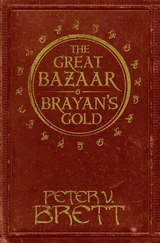In a sense, though, my filters do themselves embody a kind of white list (and blacklist) because they are based on entire messages, including the headers. So to that extent they "know" the email addresses of trusted senders and even the routes by which mail gets from them to me. And they know the same about spam, including the server names, mailer versions, and protocols.
If I thought that I could keep up current rates of spam filtering, I would consider this problem solved. But it doesn't mean much to be able to filter out most present-day spam, because spam evolves. Indeed, most anti spam techniques so far have been like pesticides that do nothing more than create a new, resistant strain of bugs.
I'm more hopeful about Bayesian filters, because they evolve with the spam. So as spammers start using v1agra instead of viagra to evade simple-minded spam filters based on individual words, Bayesian filters automatically notice. Indeed, v1agra is far more damning evidence than viagra, and Bayesian filters know precisely how much more.
Still, anyone who proposes a plan for spam filtering has to be able to answer the question: if the spammers knew exactly what you were doing, how well could they get past you? For example, I think that if checksum-based spam filtering becomes a serious obstacle, the spammers will just switch to mad-lib techniques for generating message bodies.
To beat Bayesian filters, it would not be enough for spammers to make their emails unique or to stop using individual naughty words. They'd have to make their mails indistinguishable from your ordinary mail. And this I think would severely constrain them. Spam is mostly sales pitches, so unless your regular mail is all sales pitches, spams will inevitably have a different character. And the spammers would also, of course, have to change (and keep changing) their whole infrastructure, because otherwise the headers would look as bad to the Bayesian filters as ever, no matter what they did to the message body. I don't know enough about the infrastructure that spammers use to know how hard it would be to make the headers look innocent, but my guess is that it would be even harder than making the message look innocent.
Assuming they could solve the problem of the headers, the spam of the future will probably look something like this:
Hey there. Check out the following:
www.27meg.com/foo
because that is about as much sales pitch as content-based filtering will leave the spammer room to make. (Indeed, it will be hard even to get this past filters, because if everything else in the email is neutral, the spam probability will hinge on the URL, and it will take some effort to make that look neutral.)
Spammers range from businesses running so-called opt-in lists who don't even try to conceal their identities, to guys who hijack mail servers to send out spams promoting porn sites. If we use filtering to whittle their options down to mails like the one above, that should pretty much put the spammers on the "legitimate" end of the spectrum out of business; they feel obliged by various state laws to include boilerplate about why their spam is not spam, and how to cancel your "subscription," and that kind of text is easy to recognize.
(I used to think it was naive to believe that stricter laws would decrease spam. Now I think that while stricter laws may not decrease the amount of spam that spammers send, they can certainly help filters to decrease the amount of spam that recipients actually see.)
All along the spectrum, if you restrict the sales pitches spammers can make, you will inevitably tend to put them out of business. That word business is an important one to remember. The spammers are businessmen. They send spam because it works. It works because although the response rate is abominably low (at best 15 per million, vs. 3000 per million for a catalog mailing), the cost, to them, is practically nothing. The cost is enormous for the recipients, about 5 man-weeks for each million recipients who spend a second to delete the spam, but the spammer doesn't have to pay that.
Sending spam does cost the spammer something, though. So the lower we can get the response rate—whether by filtering, or by using filters to force spammers to dilute their pitches—the fewer businesses will find it worth their while to send spam.
The reason the spammers use the kinds of sales pitches that they do is to increase response rates. This is possibly even more disgusting than getting inside the mind of a spammer, but let's take a quick look inside the mind of someone who responds to a spam. This person is either astonishingly credulous or deeply in denial about their sexual interests. In either case, repulsive or idiotic as the spam seems to us, it is exciting to them. The spammers wouldn't say these things if they didn't sound exciting. And "check out the following" is just not going to have nearly the pull with the spam recipient as the kinds of things that spammers say now. Result: if it can't contain exciting sales pitches, spam becomes less effective as a marketing vehicle, and fewer businesses want to use it.
That is the big win in the end. I started writing spam filtering software because I didn't want have to look at the stuff anymore. But if we get good enough at filtering out spam, it will stop working, and the spammers will actually stop sending it.
Of all the approaches to fighting spam, from software to laws, I believe Bayesian filtering will be the single most effective. But I also think that the more different kinds of anti spam efforts we undertake, the better, because any measure that constrains spammers will tend to make filtering easier. And even within the world of content-based filtering, I think it will be a good thing if there are many different kinds of software being used simultaneously. The more different filters there are, the harder it will be for spammers to tune spams to get through them.
Chapter 9. Taste for Makers
Copernicus' aesthetic objections to [equants] provided one essential motive for his rejection of the Ptolemaic system. ...
THOMAS KUHN, The Copernican Revolution
All of us had been trained by Kelly Johnson and believed fanatically in his insistence that an airplane that looked beautiful would fly the same way.
BEN RICH, Skunk Works
Beauty is the first test: there is no permanent place in this world for ugly mathematics.
G. H. HARDY, A Mathematician's Apology
I was talking recently to a friend who teaches at MIT. His field is hot now and every year he is inundated by applications from would-be graduate students. "A lot of them seem smart," he said. "What I can't tell is whether they have any kind of taste."
Taste. You don't hear that word much now. And yet we still need the underlying concept, whatever we call it. What my friend meant was that he wanted students who were not just good technicians, but who could use their technical knowledge to design beautiful things.
Mathematicians call good work "beautiful," and so, either now or in the past, have scientists, engineers, musicians, architects, designers, writers, and painters. Is it just a coincidence that they used the same word, or is there some overlap in what they meant? If there is an overlap, can we use one field's discoveries about beauty to help us in another?
For those of us who design things, these are not just theoretical questions. If there is such a thing as beauty, we need to be able to recognize it. We need good taste to make good things. Instead of treating beauty as an airy abstraction, to be either blathered about or avoided depending on how one feels about airy abstractions, let's try considering it as a practical question: how do you make good stuff?
If you mention taste nowadays, a lot of people will tell you that "taste is subjective." They believe this because it really feels that way to them. When they like something, they have no idea why. It could be because it's beautiful, or because their mother had one, or because they saw a movie star with one in a magazine, or because they know it's expensive. Their thoughts are a tangle of unexamined impulses.
Читать дальше












